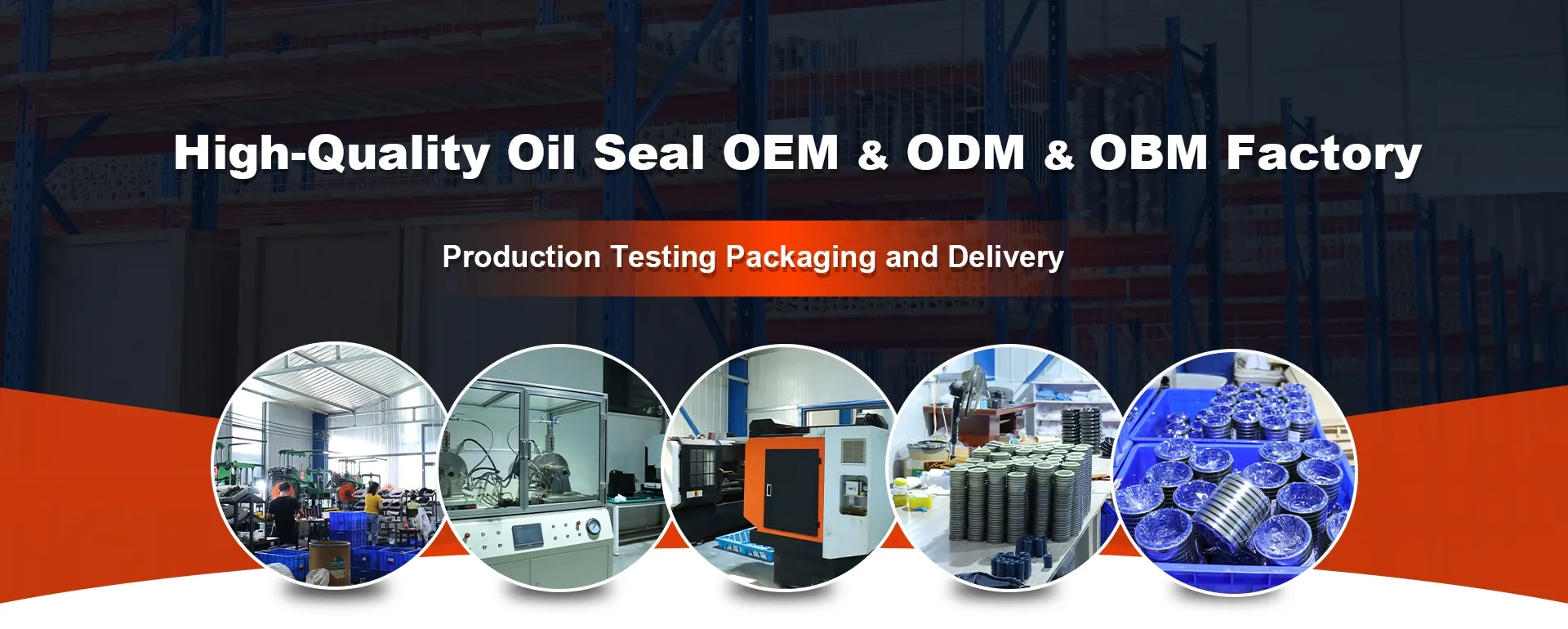Дек . 06, 2024 10:04 Back to list
hydraulic oil seal
Understanding Hydraulic Oil Seals Essential Components for System Efficiency
Hydraulic systems are vital in various industries, including manufacturing, construction, and automotive, due to their ability to transmit power efficiently through pressurized fluids. One of the essential components within these systems is the hydraulic oil seal. This article will explore the importance, types, materials, and maintenance of hydraulic oil seals, emphasizing their crucial role in ensuring system efficiency and longevity.
What is a Hydraulic Oil Seal?
A hydraulic oil seal is a mechanical component designed to prevent the leakage of hydraulic fluid from the system while keeping external contaminants out. These seals serve critical functions in maintaining pressure, reducing friction, and enhancing the overall efficiency of hydraulic machinery. While they may appear simple, the engineering behind hydraulic oil seals is complex, as they must withstand high pressures and demanding operating environments.
Importance of Hydraulic Oil Seals
Hydraulic oil seals are vital for several reasons
1. Preventing Fluid Leakage Hydraulic systems operate under high pressure, and any leakage can lead to reduced efficiency, increased operational costs, and environmental hazards. Oil seals ensure that the hydraulic fluid remains contained within the system.
2. Protecting Against Contamination Dust, dirt, and other contaminants can cause wear and tear on hydraulic components. Oil seals act as a barrier, preventing these impurities from entering the hydraulic system and damaging critical components like pumps, cylinders, and valves.
3. Enhancing System Performance By maintaining the integrity of hydraulic pressure and preventing leaks, oil seals contribute to the overall performance and reliability of hydraulic systems. This, in turn, leads to improved productivity and reduced downtime.
Types of Hydraulic Oil Seals
There are various types of hydraulic oil seals, each designed for specific applications. Some common types include
1. O-Rings These are circular seals made from rubber or elastomer materials. They are widely used due to their versatility and ease of installation.
2. Lip Seals These seals consist of a flexible lip that makes contact with the cylinder or shaft, creating a seal that helps retain fluid while minimizing wear.
hydraulic oil seal

4. U-Cups These are specially designed seals with a U-shaped configuration, ideal for applications that require bidirectional sealing.
Materials Used for Hydraulic Oil Seals
The choice of material for hydraulic oil seals greatly impacts their performance and longevity. Common materials include
1. Nitrile Rubber (NBR) Known for its excellent oil resistance, NBR is commonly used in hydraulic seals. It maintains flexibility and strength at a wide range of temperatures.
2. Fluoroelastomer (FKM) This material is suited for high-temperature applications and provides superior chemical resistance, making it ideal for harsh environments.
3. Polyurethane (PU) Known for its abrasion resistance, polyurethane seals are commonly used in industrial applications where durability is crucial.
4. PTFE Polytetrafluoroethylene (PTFE) seals are often used in very high pressure and temperature applications due to their low friction properties and chemical resistance.
Maintenance and Replacement
Regular maintenance of hydraulic systems is crucial for ensuring the longevity of oil seals. Some best practices include
1. Regular Inspections Regularly inspect seals for signs of wear, such as cracks or deformation. Early detection can prevent costly repairs down the line.
2. Fluid Analysis Periodically test hydraulic fluids for contamination to identify potential issues with seals and other system components.
3. Proper Installation Ensure seals are correctly installed to prevent early failure. Follow manufacturer guidelines for installation to avoid damaging the seals during the process.
4. Timely Replacement Replace seals at the first sign of leaks or wear to maintain hydraulic system efficiency.
In conclusion, hydraulic oil seals play a crucial role in the performance and reliability of hydraulic systems. Understanding their importance, types, materials, and maintenance practices can help ensure the longevity and efficiency of hydraulic machinery. Whether in industrial applications or everyday equipment, these small yet significant components are indispensable to modern technology. By investing in quality seals and following proper maintenance procedures, industries can enhance productivity while minimizing costs and environmental impact.
-
Unlocking the Potential of Hydraulic Systems with Essential Sealing Solutions
NewsAug.06,2025
-
Unleash the Power of Your Hydraulic Systems with Our Premium Seal Kits
NewsAug.06,2025
-
Specialized Hydraulic Seal Kits for Breakers, Pistons, and Presses
NewsAug.06,2025
-
Revitalize Hydraulic Systems with Premium Repair and Seal Kits
NewsAug.06,2025
-
Fortify Your Cylinders with Premium Sealing Solutions
NewsAug.06,2025
-
Elevate Hydraulic System Reliability with Specialized Seal Kits
NewsAug.06,2025
-
TCN Oil Seal Metal Ring Reinforcement for Heavy Machinery
NewsJul.25,2025
Products categories
















